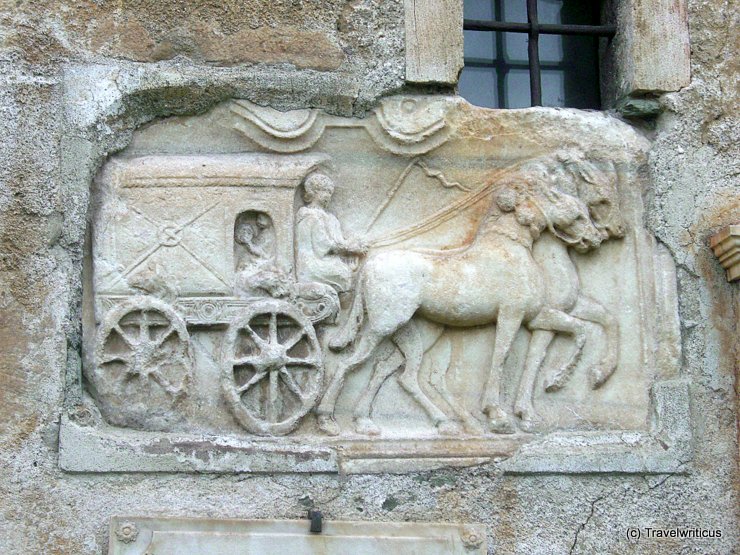
This piece is one of the most famous ancient Roman tombstones in Austria. It is the depiction of a coach. You find it in the wall of the Marienkirche, a church in Maria Saal. Though it doesn’t show a mail coach, it is sometimes called so.
You only see what you know (Goethe)

This piece is one of the most famous ancient Roman tombstones in Austria. It is the depiction of a coach. You find it in the wall of the Marienkirche, a church in Maria Saal. Though it doesn’t show a mail coach, it is sometimes called so.
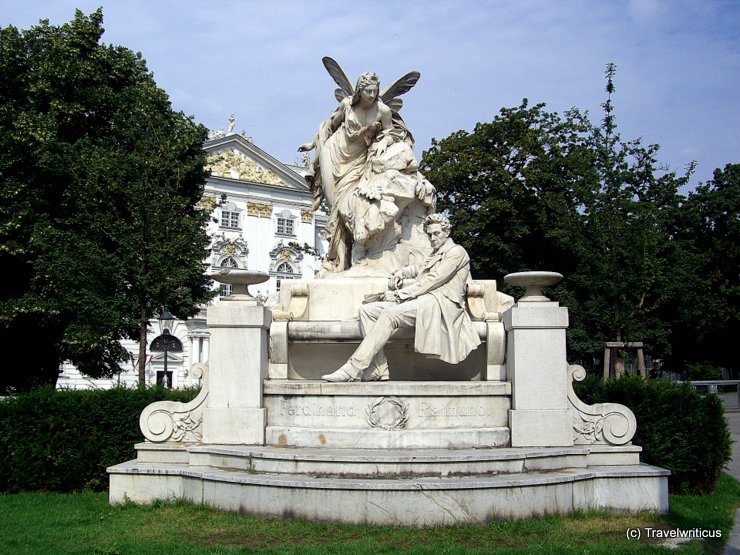
Ferdinand Raimund (1790-1836) was an Austrian actor/dramatist and a master of the Viennese Posse. Watching his plays give insights into the life of the first half of the 19th century in Vienna. [German]
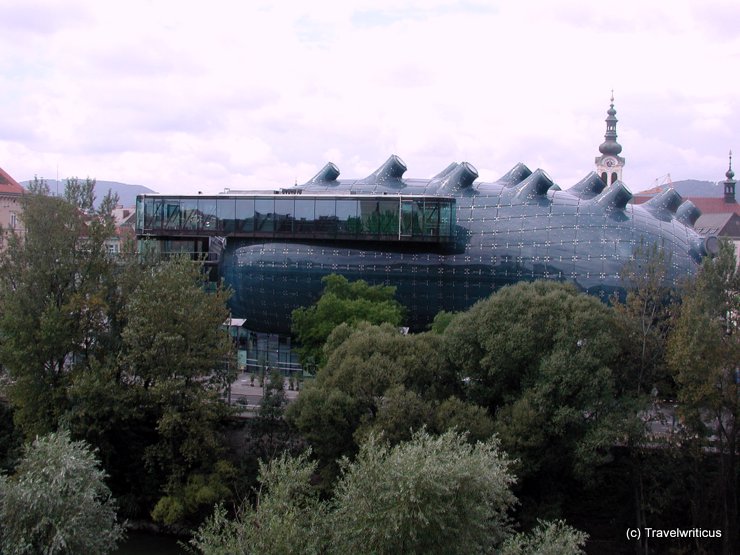
The Kunsthaus, dating back to 2003, shows exhibitions of contemporary art. Because of its architecture, it is generally known as the “Friendly Alien”. The form of an irregular bubble offers the possibility to enjoy bulky sculptures in an appropriate space. [German]
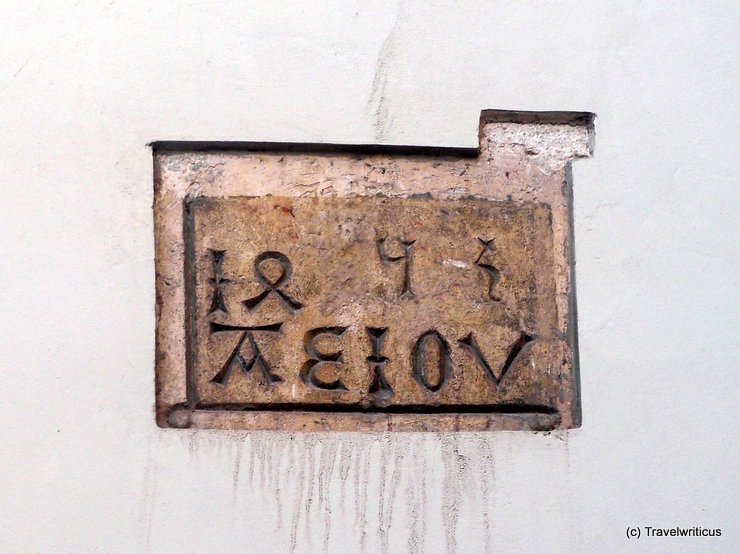
There are a lot of signs in Graz mentioning the string A.E.I.O.U. Habsburg Emperor Frederick III used these vocals to mark his buildings while staying in Graz. The meaning of this string is still unsolved. [German]
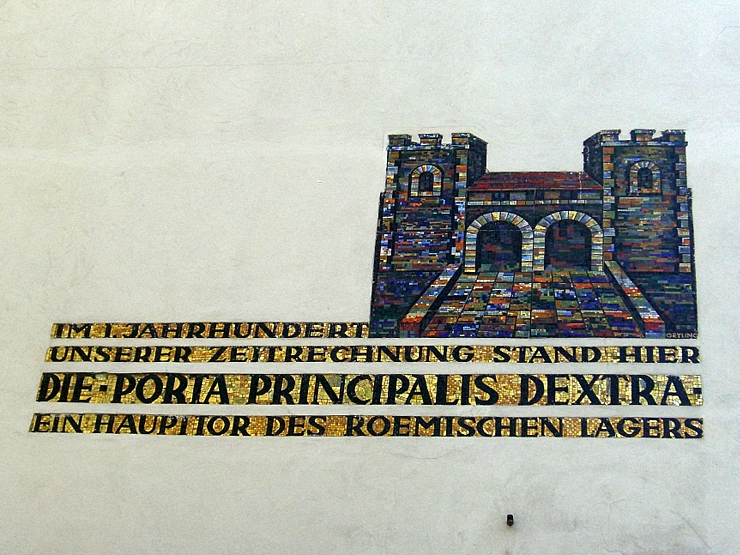
This mosaic at a building in Vienna reminds pedestrians of an ancient gate (porta principalis dextra) that stood here in the 1st century. It was part of the Roman fort Vindobona, the nucleus of modern Vienna.
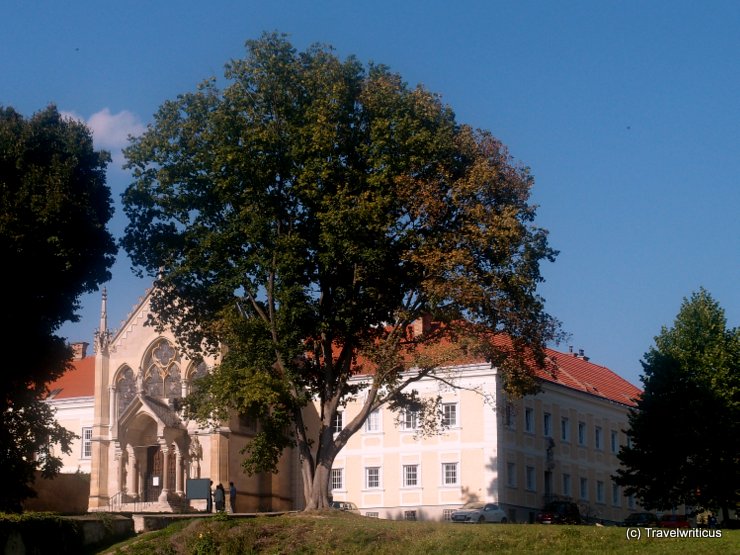
The estate in the Vienna Woods was first mentioned in the 13th century. In 1887, the Austrian Crown Prince Rudolf converted the facility into a hunting lodge (Mayerling Castle). On January 30, 1889, Rudolf and his mistress Baroness Mary Vetsera died here under circumstances that were not completely solved. [German]
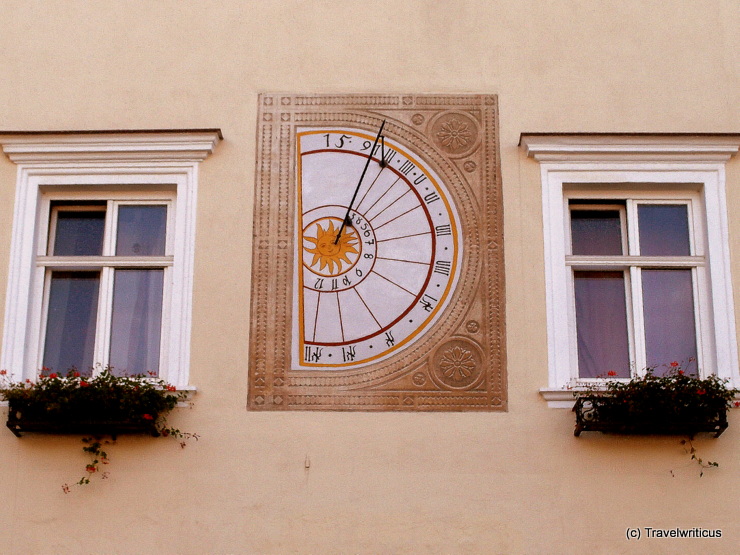
You find this sundial on the facade of a 16th-century building located at the main square of Neunkirchen. The city is the capital of the district of Neunkirchen in the Austrian state of Lower Austria.
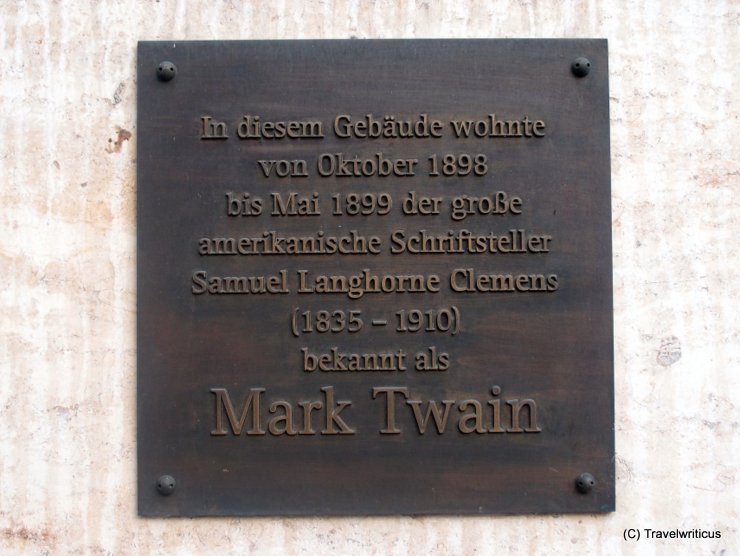
This memorial plaque for Samuel Langhorne Clemens, generally known as Mark Twain, is placed at that hotel in Vienna where he used to stay between October 1898 and May 1899. The hotel named Ambassador is still a prime address in Vienna.
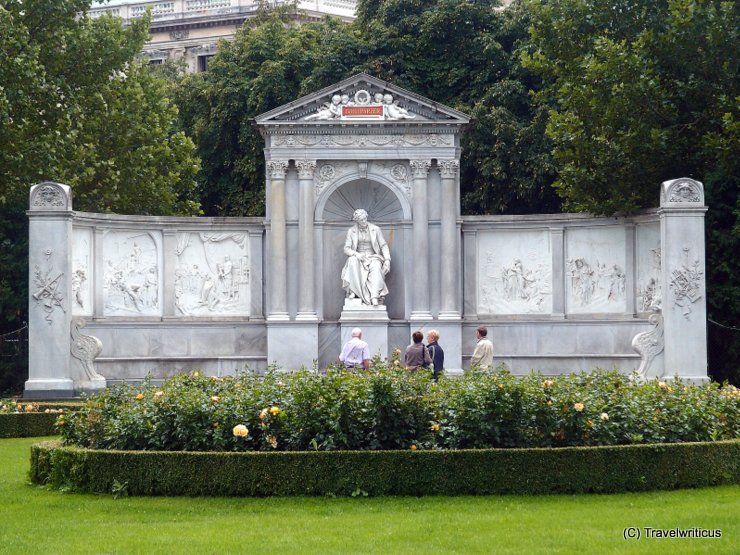
The monument to the Austrian writer Franz Grillparzer (1791-1872) was built in 1889 and displays scenes from his works. It is located in a public park of Vienna named Volksgarten, which is worth a visit, especially during the heyday of roses. [German]
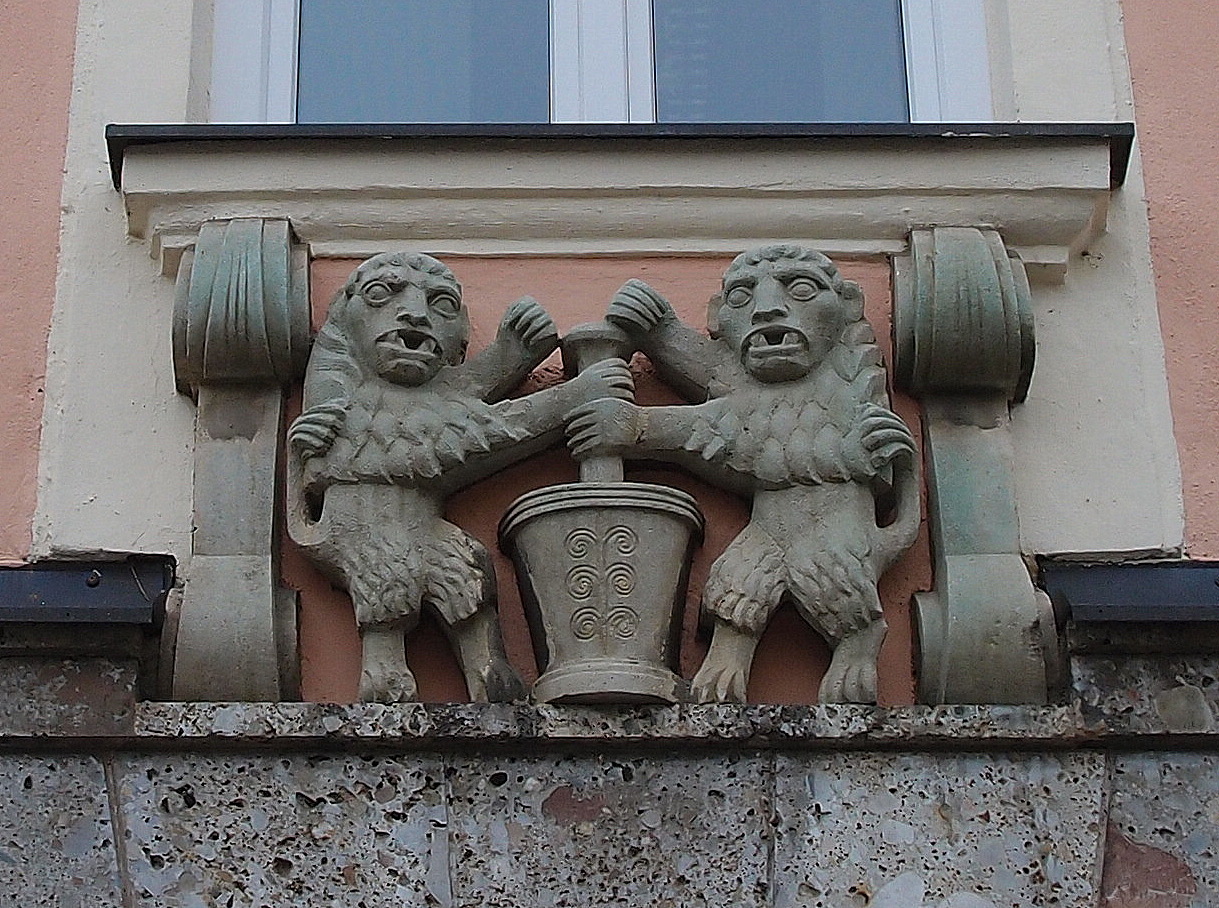
This house sign is located at the former location of the town pharmacy in the building Hauptplatz No. 10. Since 1674, a gingerbread baker has been proved here. A pharmacy started to run in 1841. The house sign dates from the 19th century. [German]
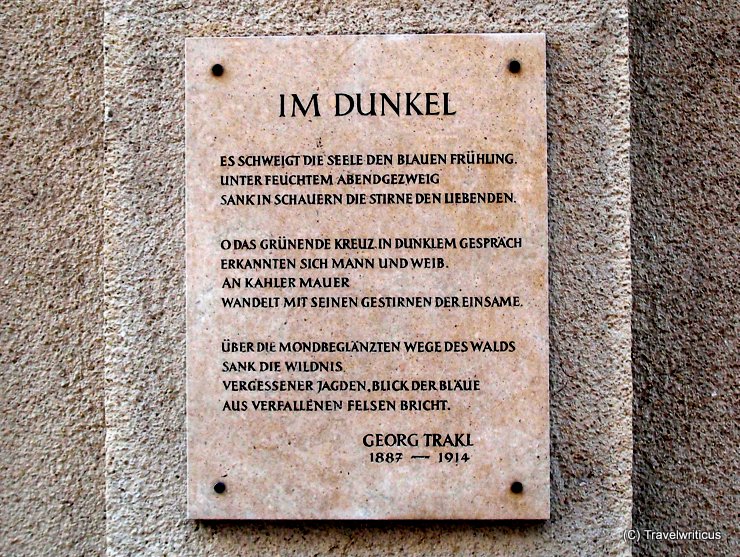
A famous son of Salzburg is not only Wolfgang Amadeus Mozart but also the poet Georg Trakl. The Salzburg-born author lived the first 21 years of his life in this city. You see boards with his poems scattered all over the central town.
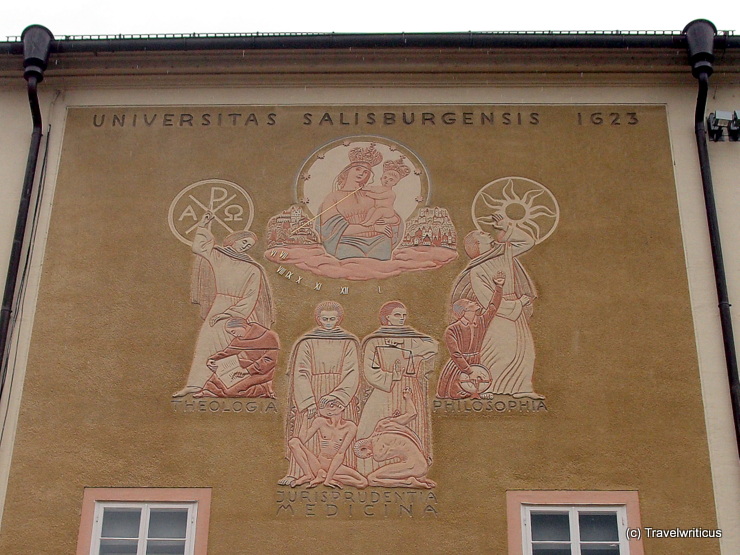
This fresco with a sundial is located on a wall of the old university at the Max-Reinhard-Platz. It was created by Georg Jung (1899-1957). The depictions refer to the university founded in 1622. [German]